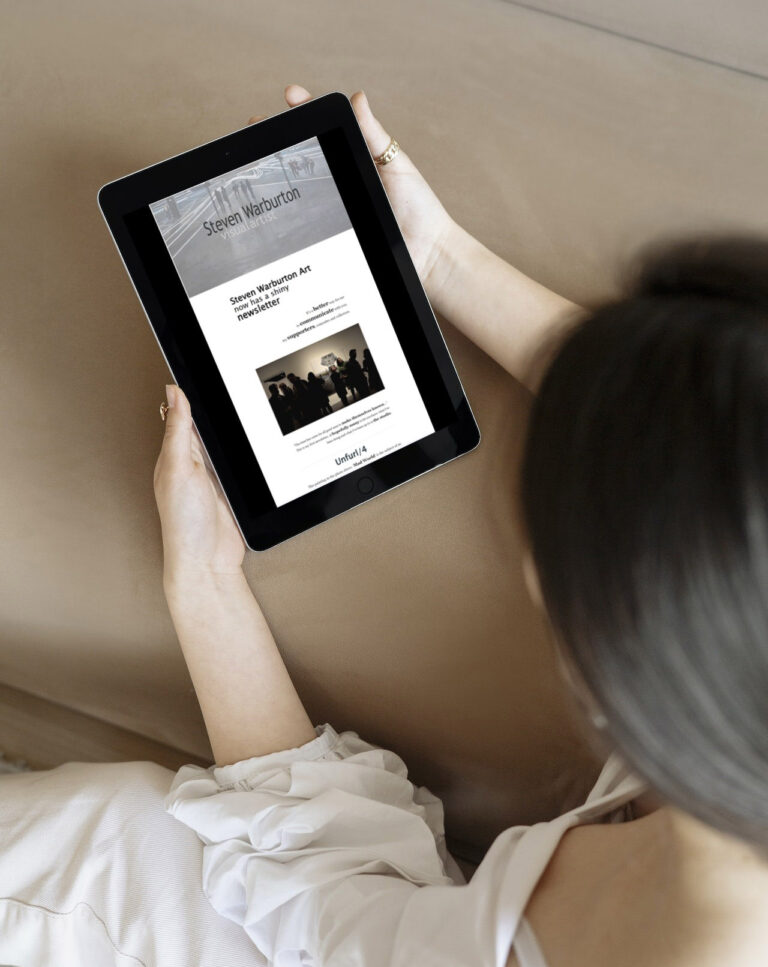The Artists Business Lounge
Art Business Coaching for Visual Artists
10 Tips For Writing Emails to Your Subscribers

Writing Emails for Your Mailing List.
I’ve had a few artists ask me about how to write emails to their mailing list subscribers.
When it comes to email marketing, (because let’s face it, that’s what your newsletters and emails are) engagement is key.
If your subscribers aren’t opening and clicking through your emails, then you’re not going to achieve your desired results.
Your particular emails will depend on your audience, your business model and how you want to be perceived.
Writing about your art is such a key skill for success, that writing emails gives you extra practice and experience.
You can buy ‘swipe files’ to copy and paste, but almost none of those are useful for artists* – because yes, selling art is different. Learning how to write your emails for your audience and paying attention to what works over time is a crucial skill and can make a huge difference on your career success.
So, how do you write emails that will engage your subscribers and get them to take action?
Here are 10 tips to help you write emails that will get opened, no matter your audience or business model:
1) Keep your subject lines short and to the point.
Long, rambling subject lines are a surefire way to get your emails ignored. Keep them short, sweet, and to the point to increase the chances of them being opened.
BUT they also need to be interesting and compelling enough to get a click. Avoid using the email subject equivalent of ‘untitled’ like ‘newsletter #22’ or ‘studio news’
Add pre text – the bit that shows in the inbox preview after the subject line.
2) Personalise your emails.
Your subscribers are more likely to engage with an email that feels like it’s been written specifically for them. Use their name in the subject line and throughout the email body to make it feel more personal.

3) Write it in your style as if you are speaking with the reader.
No one wants to read a dry stilted email, or an email that could have been written by any artist.
They want to read an email that sounds like you.
Write like you would speak to a friend to make your emails more engaging. When you use your own voice, in your own way, you are helping people get to know YOU and build trust.
What’s your style? Is it funny, cheeky, serious, informative, chill, formal? Write in your style.
4) Keep your emails focused.
I can’t stress this enough – Don’t try to cram too much information into one email.
The more you put in, the less likely anyone will take action. Why?
Because your email can read like a list telling the reader about you, rather than an engaging piece of relevant information.
It’s like cramming too much work into a show, it dilutes the impact of each individual piece.
Keep your emails focused on one topic or offer to make them more engaging.
If you have too much to share, try sending more frequent emails, or combining emails with longer-form blog posts.
5) Make use of images.
Most research tells us that text based emails have better results than image emails, but that isn’t necessarily truse for artists and galleries for that matter.
Use your images selectively to make your emails more visually appealing and thus more likely to be opened and clicked on. Add ‘alt text’ to each image.
Make use of ‘plain text version’ and check how your email looks without the images (some people will have emails set to not automatically load images).
If you are including images of artwork available to purchase, hyperlink the image to the purchase location.
6) Use compelling call-to-actions.
Your email’s call-to-action (CTA) should be clear and compel your subscribers to take the desired action. Something like “Buy now!” or “Sign up today!” is more likely to get clicks than something vague like “Click here.” Play around and tailor your calls to action and button text to suit you and your audience.
7) Invite engagement
Ask a question, encourage people to reply. Why? Aside from connection and engagement, when people reply it helps your email delivery rate (a topic for another day perhaps )
8) Send emails at the right time
Timing is everything when it comes to email marketing. Sending your emails at the right time will increase the chances of them being opened and clicked on.
Check your email system analytics to help you understand when people are more likely to open the emails you send.
(Did you know many email systems allow you to schedule the time your email lands by the recipient’s Timezone? )
9) Send your emails regularly and consistently
👍 rule of thumb at least once a month most months, more often for an e-commerce driven art business)
The power of email marketing lies in building relationships, there is a compound effect where each email adds to the value of previous emails, and that comes with regular communication. You want people to remember who you are, not wonder why you’ve emailed.
10) Before Your Hit Send
Check spelling, grammar – Grammarly is a great tool for this.
See your email in preview (on desktop, tablet and mobile).
Send yourself a test email and check everything – again on computer and mobile. Lots of people read emails on mobile, so take the time to check.
Check your links. Click on each of them and make sure they go where you intended.
You can’t unsend emails filled with errors so take a few steps to make sure the focus is on what you want to communicate.

By following these 10 tips, you can write emails that will engage your subscribers and get them to take action. So start putting them into practice and see the results for yourself!
* While I don’t advocate using standard swipe files, I do provide specially written swipe files in The Art of Profitable Email to help get you started so you can customise your own.
Related Blog Posts
Course - The Art of Profitable Email
Email Marketing for Artists
Want to improve your email marketing?
NEW The Art of Profitable Email An online course with resources covering everything artists need for email marketing. Includes
📨 On-demand video lessons covering everything you need
📨 110 proven Subject Lines for artists
📨 56 Calls to Action
📨 Email Welcome and Nurture Swipe Files
📨 Extensive Trello Board with a whole year of prompts and guidance to help you plan and organise your email content (you can use this for all your marketing planning)
Plus a community so you aren’t on your own
and more…


